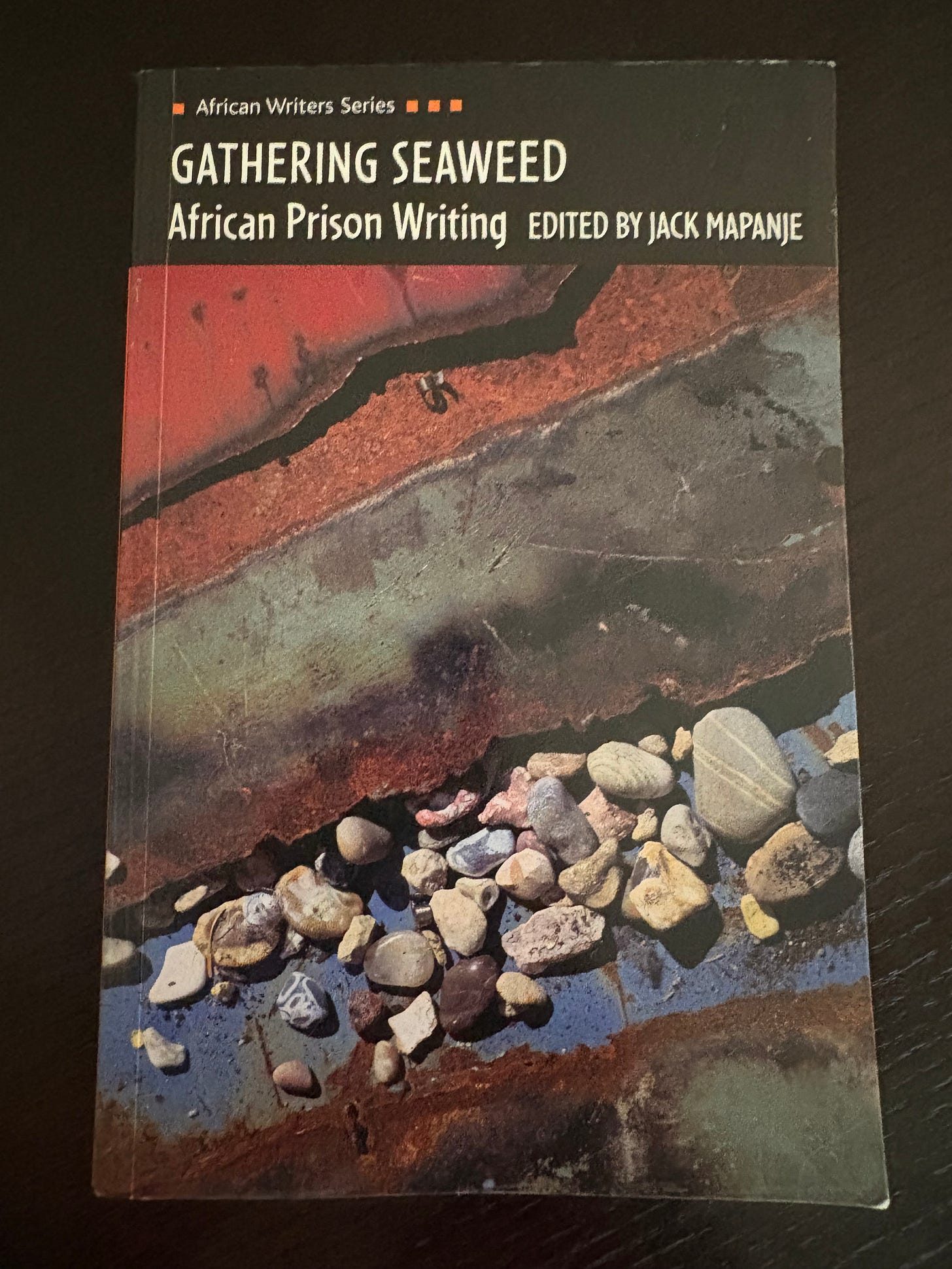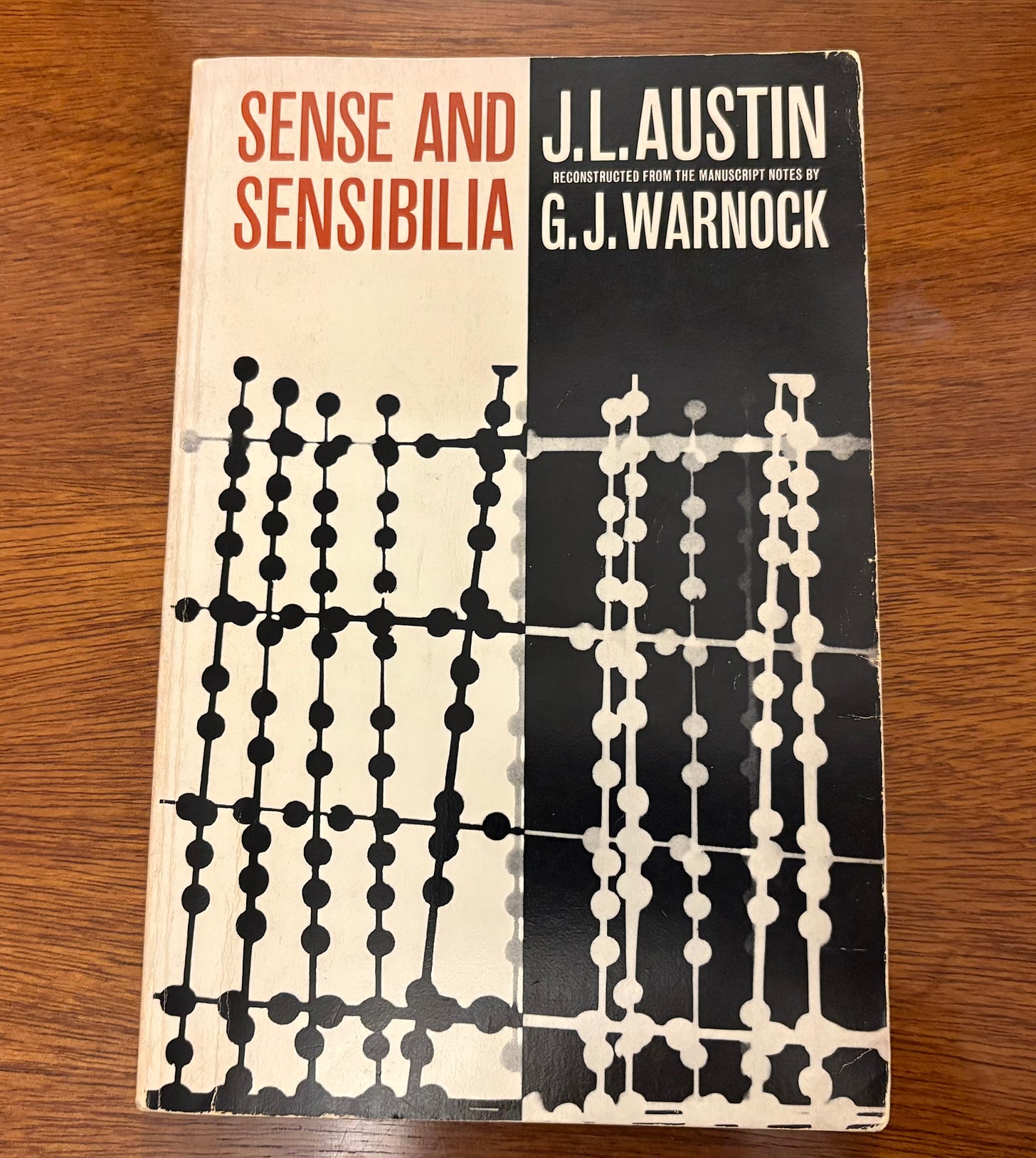five top things i’ve been reading (thirty-sixth edition)
the latest in a regular 'top 5' series
Cell Number Eleven, Kwame Nkrumah
Sense and Sensibilia, J.L. Austin
The Time Traveler’s Wife, Audrey Niffenegger
The man arrested for helping 29 people die: ‘It was compassion’, Stephen Bleach
Beethoven Symphony No.7, conducted by Roger Norrington
This is the thirty-sixth in a weekly series. As with previous editions, I’ll move beyond things I’ve been reading, toward the end.
1) Cell Number Eleven is a short essay in which Kwame Nkrumah, later to become the first prime minister of Ghana, reflects on the fourteen months he spent in James Fort.1 James Fort is a small stone building on the Accra coast, originally used as a place to hold slaves, and then until 2008 as a prison.
Nkrumah describes living there in appalling conditions: sharing a small dark cell with ten other men, eating inadequate noxious food, and suffering from a lack of privacy and a ban on newspapers and writing implements. This ban hit Nkrumah particularly hard, as a political prisoner who’d been incarcerated for leading the fight for Ghanaian independence — a fight that continued during his time in James Fort. He writes that “my greatest anxiety at that time was how the Party was faring during my absence”.
He also writes, however, about gambling for extra sheets of toilet paper, about the late nights he spent writing political messages on these sheets, and about managing (without revealing how) to get these messages to his party deputy outside the prison walls. “I used to lie in this patch of light”, he tells us, “and write for as long as I could until cramp made it unendurable, then I would change to a standing position and use the spot of light on the wall”.
I visited James Fort on Saturday, just after reading Nkrumah’s essay. No longer in use, the building was run down, yet no doubt not much different from how it was during his fourteen months. Stone cells are stone cells. Nkrumah’s was even smaller and darker than I’d imagined. Beyond its role in informing us about the important recent history of Ghana, however, this essay also serves as a comment on the general inhumanity of punitive imprisonment — not only in terms of the additional rights-violating conditions this kind of incarceration often involves, but also its nature.
To this end, Nkrumah concludes by reflecting on his belief that, “in a very short time prisoners lose all their individualism and personality; they become a set type in an unhappy world of their own”. This, he tells us, can cause them to find false solace in a cell, as a “protective shelter” against the “outside world” — perhaps the most inhuman burden they’re at risk of bearing.
2) I’ve been reading J.L. Austin’s Sense and Sensibilia (1962) gradually this year, a chapter every so often. It’s a book about appearance and reality. And as I wrote in February, Austin pulls few punches:
“He smashes into the long-standing debate about whether we can directly perceive ‘material things’, or whether we only ever perceive 'sense-data' of them. Are you really seeing the bacon sandwich you’re about to pick up, or is it just an impression your brain created?”
In my last update on the book, Austin had just spent Chapter Five focusing in hard on the ‘argument from illusion’. This is an argument against direct perception, which runs something as follows: since we don’t perceive directly in the case of illusions (e.g., when a straight stick looks crooked in a glass of water), therefore we also mustn’t be perceiving directly in ‘veridical’ cases. Austin ends Chapter Five pretty unimpressed by this argument.
Chapter Six features a slight shift of focus, on to Austin’s frustrations with A.J. Ayer’s particular take on the argument from illusion. Ayer, Austin tells us, doesn’t accept the argument “without reservations”. But Ayer, Austin tells us, does nonetheless accept “all the really important blunders on which the argument rests”! More snarky Austin comments follow, including my favourite: “Of course all this won’t really do, but we may let it pass for the moment”. I also enjoyed the methodical way in which Austin works towards his conclusion that the real problem with Ayer’s take on the argument — beyond, albeit related to, Ayer’s attempt to divert our attention toward the linguistic — is that, implicitly, he goes all in on sense-data.2
Much of this chapter replicates the ideas of Chapter Five. But Chapter Seven, when we get on to it, will have been worth the wait.
3) The topic of Audrey Niffenegger’s novel The Time Traveler’s Wife (2003) is easy to guess. Girl meets guy; guy does some time-travelling; girl gets left behind and left in front. At over 500 pages, it’s a big book. But it was only near the end, during a nice set-piece finale, that I realised quite how many characters Niffenegger had managed to neatly draw and draw out. The subtlety of this achievement is a real strength of this novel.
The main problem with it for me, however, is that earlier this year I read the first two of Solvej Balle’s On the Calculation of Volume novels — a set of six, which she’s part way through writing. The Balle set is also about time travel. And its first two are better at every margin than the Niffenegger. Indeed, I’d go as far as to say that, as a whole, each of them is better than most of the novels I’ve ever read.
So while novels about time travel are rarely not going to be of interest to me, and while I enjoyed many things about Niffenegger’s, I couldn’t stop thinking about what it would’ve been like to have read it before Balle’s. Was the slight dullness of attraction I felt to The Time Traveler’s Wife solely a function of comparison? Would I have thought harder about its puzzles had they not felt both looser and more convoluted than Balle’s? Or was it my love of the Balle books that pushed me to stick with it?
I don’t believe time travel is possible, so unless I somehow lose the relevant memories, I assume I’ll never know.
4) This recent Sunday Times story about Sean Davison, a microbiologist under investigation for having “helped at least 33 people to kill themselves”, stands as an implicit warning against the legalisation of assisted dying.
Regular readers of this Substack will know that I’m opposed to the current UK moves in this direction. I wrote here about why legalising assisted dying shouldn’t be seen as furthering individual freedom. And I wrote here about the extreme difficulty (perhaps even impossibility) of tightly constraining access to assisted dying in line with standard promised conditions: conditions pertaining to the near proximity of death, the severity of physical pain, and the reliable giving of consent.
“I enjoy helping people to have the death they want”, Davison is quoted as saying. And “the word ‘beautiful’ crops up a lot”, the writer of the article tells us, when Davison talks about the deaths he’s been involved in. One of the strongest arguments against the legalisation of assisted dying hinges on the risks involved in giving people the legal power to kill others — and particularly the risks involved in giving this power to those who feel an attraction to exercising it.
5) My favourite symphony is Beethoven 7. For a long time, my favourite recording of Beethoven 7 has been the one you can find within this complete Beethoven symphonies cycle (2001), conducted by the late Roger Norrington. I listened to this Beethoven 7 yet again the other night, enjoying particularly this time the fantastic attacca between the final two movements.
It was originally published as part of Nkrumah’s autobiography (1957), but I read it as an extracted essay, published in Jack Mapanje’s edited collection Gathering Seaweed: African Prison Writing (2002).
In this chapter, Austin continues his attack on loose usages of the word ‘real’. He continues this attack with added force in the next chapter!








Have you read The Ministry of Time yet?